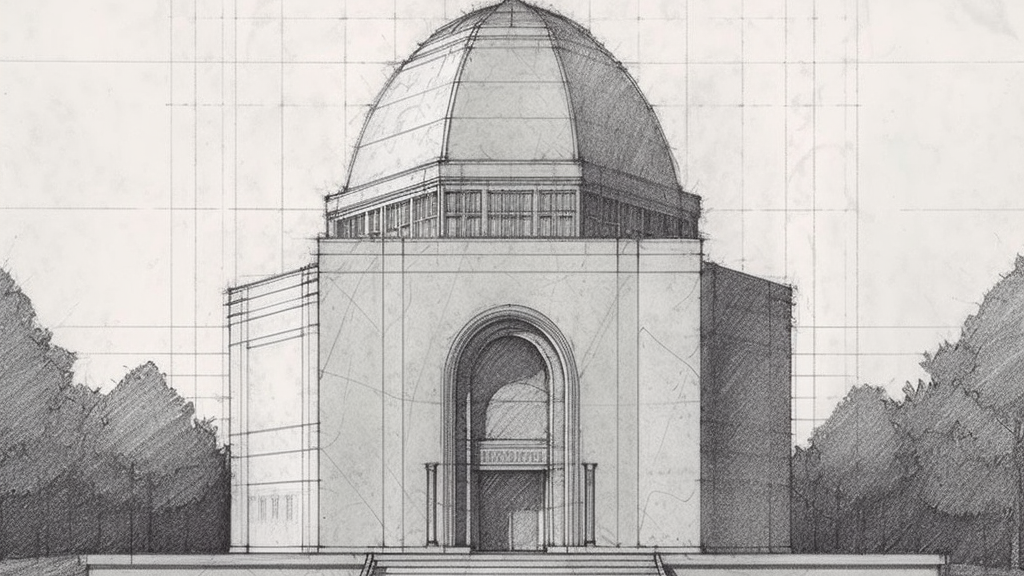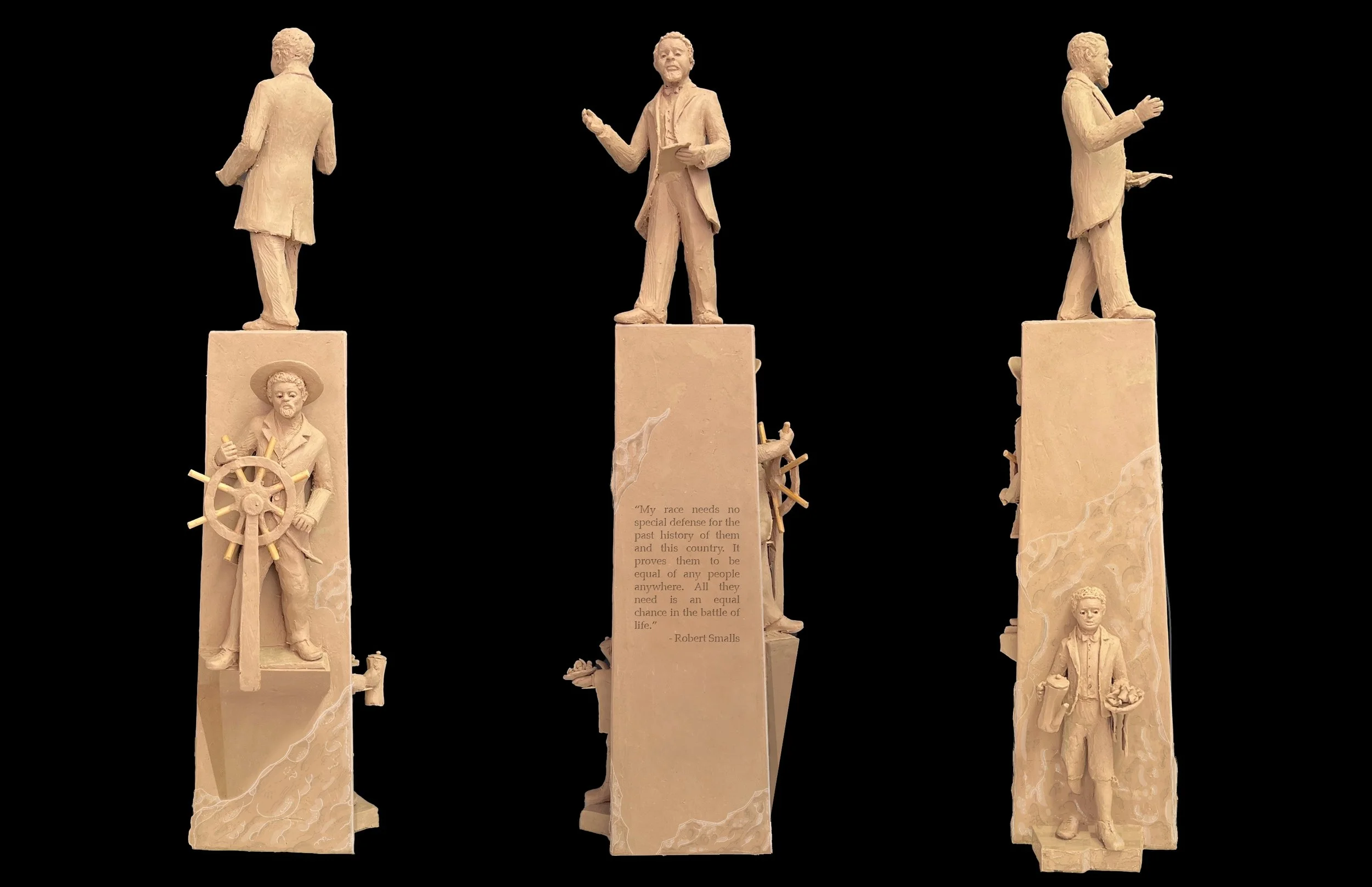Looking to the past to build a better future
An interview with Jim Peterson of Peterson Monument Company (Egg Harbor City, NJ)
Jim, I certainly would like to thank you for the opportunity to pick your brain a little bit. We’ve known each other a few years now, but for those who may not be as familiar with your work, please tell us a little about your company’s backstory, and how you personally got started in the monument industry.
Well, I’ve been doing this since 1975. My father was a funeral director who sold monuments on the side. He had other people do the work for him that he was not real happy with. They weren’t very reliable. I had just gotten out of college, and I could draw a little bit. I wasn’t really set on any particular thing to do, and so this sounded interesting to me.
We kind of learned on our own at first, but then found out about the Barre stone trade school up in Vermont. I decided to go up there and take the course in late ’76 or early ’77, which was invaluable. The school is no longer there from what I understand, but it gave me a really great background on how to work with stone. We would work on drafting in the morning, and do the more hands-on shop work in the afternoon.
Through the trade school, I found where Bert Gast was offering this correspondence course. After I got back from the trade school, I went ahead and took the course which really opened my eyes.
We were then and are still a very small company. With the newfound knowledge learned from the Barre trade school and the Bert Gast course, we just started to build our own specialty monument company.
My father left the funeral business, and we worked together for a while. Later on, my wife and now my son have joined the company.
What was your perspective of the industry when you were first getting started, and how has that perspective changed over the years?
I didn’t know a lot about the industry, and never really had much interest in it growing up. The situation just happened to present itself at the right time. My father’s knowledge of the industry was really just limited to marker sales, and so we really looked throughout the industry to educate ourselves.
At that time, we happened to be only 20 minutes from a founding American Institute of Commemorative Art (AICA) member, and so I studied his work so that I would be able to match his quality in the future. Looking at his work and others, I saw the industry as an opportunity to express creativity through an extremely unique medium. It was so much more than just selling a stone.
Now how has that changed? Well, that was years ago, and there was a lot more nice work in this area back then. It does seem that there are more companies just looking for an easy dollar these days. To many, this has become a commodity market, and unfortunately, quality is no longer the top priority.
The import market has certainly changed a few things for us, and while there is a growing concern about cremation throughout the industry, fortunately, the majority of cremations in our area do result in a burial and some sort of memorial. Cremation really should be viewed no differently than traditional burial, and if anything, should only allow for a more creative memorial.
Very true, Jim. Who were some of your biggest influences or mentors when you first got started?
Bert Gast is definitely number one! I learned so much taking the correspondence course through him, and had the opportunity to learn from him for years following the course as well. I never had the chance to meet a lot of the older guys, but have learned a lot from Jeff Anderson, Charlie Hunt, Terry Joy and Mike Johns. I never met Harold Schaller or Gene Faehnle, but have always admired their work.
All of those guys are certainly incredible designers, and you certainly hold ranks up there with the best of them. Your designs have personally inspired me, Jim, which is one of the many reasons why I wanted to interview you. Tell me about your design process.
In this industry, I think you either tend to lean towards creativity, or you don’t. Creativity is something you have inside of yourself, and I’ve always thought of myself as a creative person. Much of my creative eye was developed by simply looking through the old industry publications at what other individuals were doing.
Harnessing that creativity into a pleasing design, is a process that takes time. You have to try a lot of different things to arrive at the best option. Each design opportunity builds upon the next.
Everything to me is pretty much a design problem. When meeting with the family, I determine all of the factors. Which materials do they like? What is the message that they want to portray?
Once I know the family’s likes and dislikes, I give myself time to sit back and think about a possible solution typically over several days. I find that a lot of my best ideas actually come when I am able to just relax and think at home in the evenings. Often times there are too many distractions at the office to fully realize a design’s potential. If I do sketch in front the family, it is typically very crude, and only to determine a basic direction for the design.
You’re pretty much describing my design process as well, Jim. I feel that time is very valuable, and can help a good design become a great design. I saw an article years ago that showed your thumbnail sketch process. You just sketch out as many different small scale concepts as possible to determine what would be the best direction.
I call it the “blind squirrel” approach. If you draw a hundred little sketches, one of them should turn out pretty good. Haha.
Is there a particular project that you have worked on that you would consider to be your best work?
Oh boy! Nothing jumps out at me… We haven’t really done a lot of big things. Most of my market is small foot markers, or smaller upright work restricted to two spaces.
One of your designs that has stuck with me over the years was for a family whose name was, I believe, Krull?
Kull! Yeah, that was probably up there. I did that monument for a car dealer in the area. He came in and told me what he wanted, and I came up with a couple of ideas. That was probably my breakthrough design in contemporary work, at least at that scale. That was definitely a nice one!
Earlier, you mentioned that your son Matt is now in the business. Tell me about his role in the company and how you see him carrying on the family business.
He started in the shop, and I’ve really been teaching him everything that I know for the past many years. He’s been doing great with the layouts, and with shape carving. Now, he’s at a point where he can pretty much do everything that I did for so many years, and has really started to enjoy sales. I see a creative side to him, so our next area of training will be design. I’ve thrown a few design challenges at him already, but I think once he has the design down, he will be very well rounded within the business.
We are slowly transitioning into the whole running the business side of things as well.
Matt and I are the same age, and over the past few years, I’ve realized that you have to be a sponge and absorb all aspects of this industry. Matt has a great teacher, and I’m sure he will do just fine.
Jim, to top things off, what do you see as the key element that will allow this industry to thrive well into the future?
Well, that’s a heavy question. Haha!
The industry is relying on you, Jim.
I think we have to look back to our past at some of those old fantastic monuments. We have to add some of those classic elements into our new work. Design, I think, is the key to everything. The ability to design well will put you in a good place.
Being a commodity broker is not the way of the future.
I would like to see more well designed pieces whether being made overseas or here in the states. We want to keep up with design trends, and never be afraid to try new things.
If cremation is going to be the new thing, then we need to find the best and most creative way to make cremation monuments. That doesn’t mean that the cremated remains have to go inside of the monument either. It can really be anything!
If we share ideas, and work together, we can make this industry absolutely anything we want it to be.
Don’t worry about sounding professional. Sound like you. There are over 1.5 billion websites out there, but your story is what’s going to separate this one from the rest. If you read the words back and don’t hear your own voice in your head, that’s a good sign you still have more work to do.
Be clear, be confident and don’t overthink it. The beauty of your story is that it’s going to continue to evolve and your site can evolve with it. Your goal should be to make it feel right for right now. Later will take care of itself. It always does.


